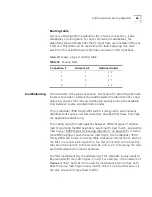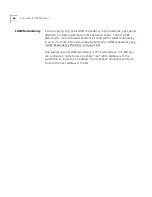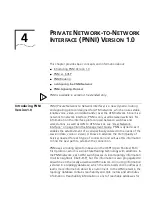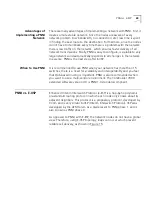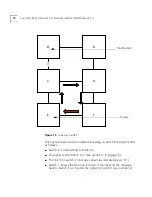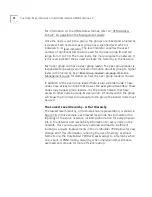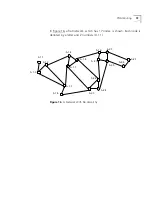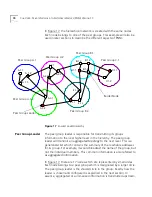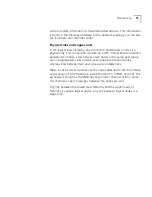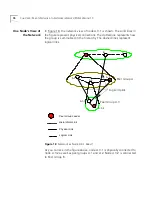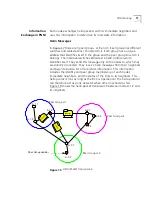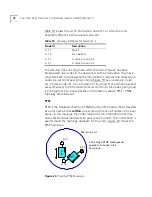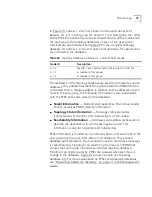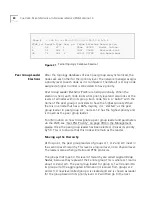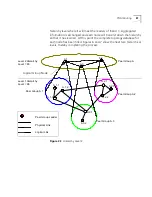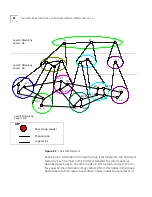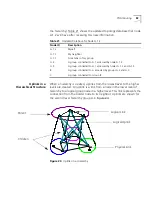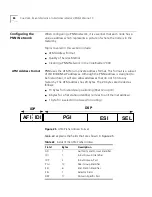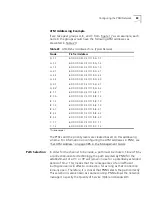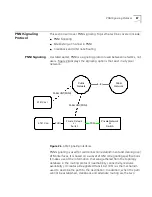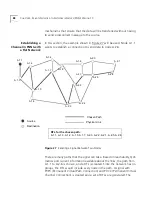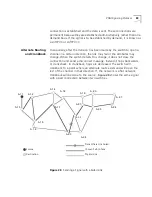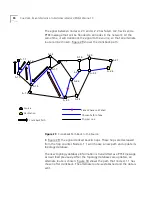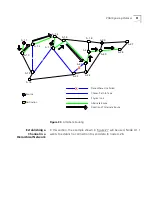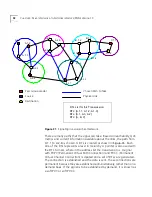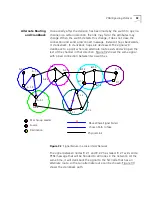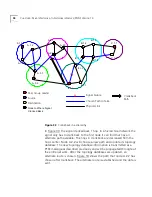
PNNI Routing
79
In Figure 20, node A.1.2 will not transmit information about A.2.1,
because A.1.2 is in peer group A.1 and A.2.1 is in peer group A.2. After
all the PTSE information has been exchanged among all the members of
the peer group, the topology databases of each of the peer group
members are
synchronized
. See Table 20 for the complete topology
database for node A.1.2. You will notice that addresses for outside links
are not listed in the database.
The addresses in the topology database are saved and marked as
native
addresses
. Any address that leads the signal outside the PNNI domain is
considered to be a
foreign address
. In addition to the addresses of each
node in the peer group, the following information is also transmitted
with the PTSE and is also stored in the database:
Nodal Information
— Node ID and capabilities. Peer Group Leader
Priority, as well as PNNI hierarchy information.
Topology State Information
— Topology state parameters
(characteristics of the links, and characteristics of the nodes).
Reachability Information
— Addresses and address prefixes which
describe the destinations to which calls may be routed. This
information is also for horizontal and outside links.
PTSE information is flooded on a continuous basis, until each node in the
peer group has the same information in its database. This is called
database synchronization
. The mechanism used to send these messages
is called flooding.
Flooding
is an advertising mechanism in PNNI that
ensures that each node maintains an identical topology database.
Flooding is an ongoing activity. PTSEs are reissued whenever there is
change in the database. Figure 21 shows a sample of a topology
database log. For more explanation on PTSEs and topology databases,
see "Organizing a Network Hierarchy" on page 71 in the Management
Guide.
Table 20
Topology Database for Node A.1.2 after PTSE Exchange
Node ID
Description
A.1.2
Myself - I am a border node with groups A.3 and A.2
A.1.1
A member of my group
A.1.3
A member of my group
Summary of Contents for CoreBuilder 7000
Page 12: ......
Page 30: ...30 CHAPTER 1 ATM NETWORK BASICS...
Page 32: ...32 CHAPTER 1 ATM NETWORK BASICS...
Page 34: ...34 CHAPTER 1 ATM NETWORK BASICS Figure 8 LANE Network over WAN...
Page 96: ...96 CHAPTER 4 PRIVATE NETWORK TO NETWORK INTERFACE PNNI VERSION 1 0...
Page 184: ...184 CHAPTER 7 LAN EMULATION VERSIONS 1 0 AND 2 0...
Page 206: ...206 CHAPTER 9 DEVICE MANAGEMENT...
Page 222: ...222 APPENDIX A TECHNICAL SUPPORT...
Page 234: ...234 APPENDIX B PROTOCOLS AND INTERFACES...
Page 238: ...238 APPENDIX C COREBUILDER 7000 FAMILY ATM SWITCH SPECIFICATIONS...
Page 242: ...242 APPENDIX D SAFETY INFORMATION...

